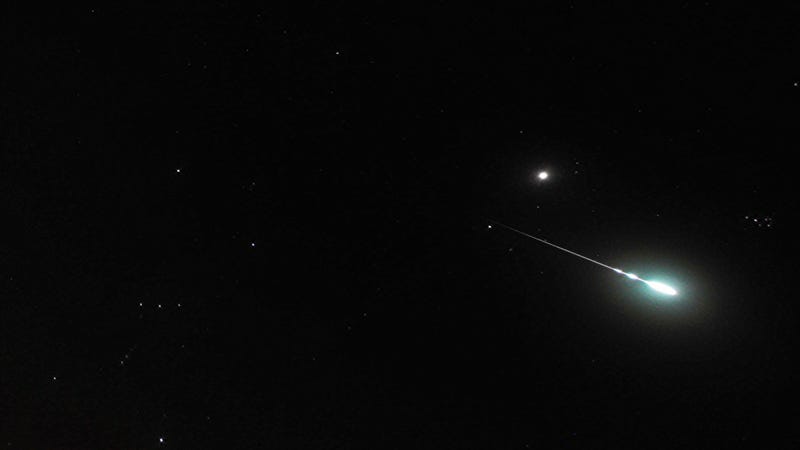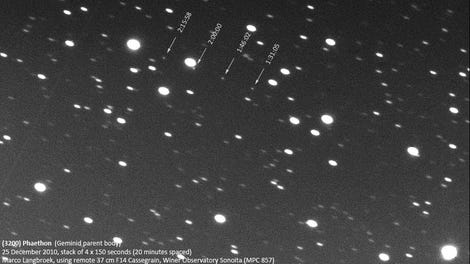
Tomorrow night (weather permitting), you might be able to peer up to the sky and see some of the year’s brightest meteors, the Geminids. And now, thanks to new research, you may have a better understanding of why they sometimes blow up and make those spectacular flashes.
You might remember the incredible Chelyabinsk meteor exploding over Russia in 2013. After its entry into Earth’s atmosphere, most of its mass seemed to have disappeared—scientists only discovered teeny fragments. A new model from researchers at Purdue University suggests a never-before-observed mechanism—one that drove the meteor’s explosion and explains the lost pieces:
“We believe that the intense fragmentation that saw the survival of only small pieces may be accounted for by a previously unrecognized mechanism or process of air penetration into voids (cracks and pores) in the entering meteoroid,” the authors write in the study, published yesterday in Meteoritics and Planetary Science.
In other words, meteors explode from the inside.
Previous work from other papers implies that asteroids are much less dense, and likely much more porous than you’d expect. The scientists built a computer model of these meteors entering the atmosphere, allowing that porosity to change as they traveled. This would allow the amount of air entering the asteroid to increase “dramatically.” They combined this with analysis of the air pressure around the speeding rock, like the low pressure spots it left in its wake.
The result? The meteor would start to break up sooner upon entering the atmosphere as the pressures inside increase earlier. That might explain why so few Chelyabinsk fragments were found, according to the research presented yesterday at the 2017 American Geophysical Union’s fall meeting.
This is just a model, so it has its limitations. The authors pretty much ignored the effect of heat evaporation on the meteor entering the atmosphere, since they were hoping solely to get a better picture of the role of their new air penetration idea. They focus only on the early stages of the meteor breaking up which could lead to the meteor evaporating later.
“We do not make any claim here to have modeled all aspects of the entry process, which will be a more major undertaking,” they write.
So if you manage to catch the Geminid meteor shower tomorrow, just consider these two things: First, you do not have to worry about an asteroid impact. And second, those bright meteorites flashing through the sky are a governed by a pretty complex process that scientists are still trying to figure out.




